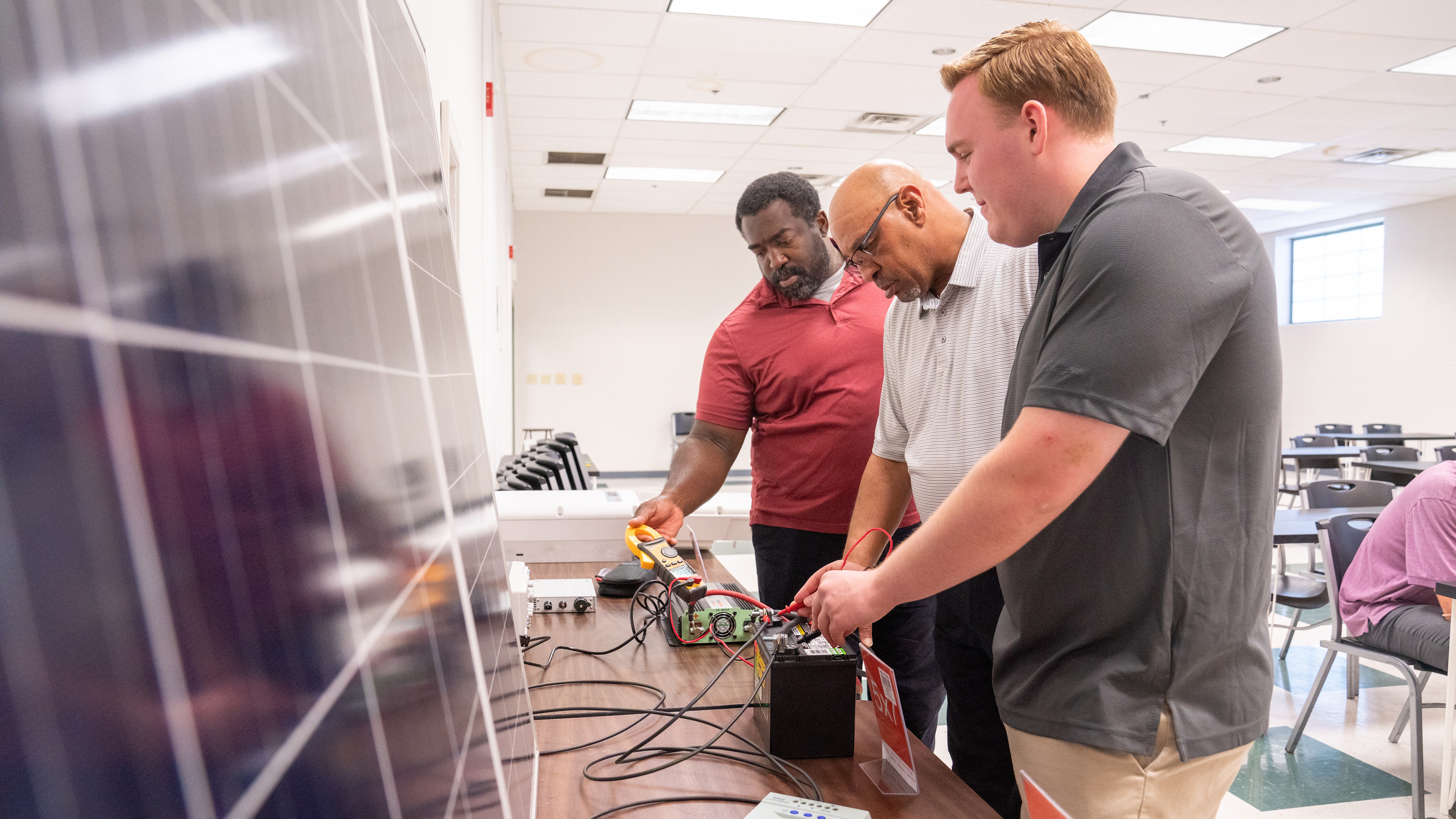
The historic residence hall scored the highest LEED point total of any building on campus.


Spider student represents sustainability on a global stage
In February, UR first-year Farah Sertovic acted as a youth ambassador at COP28, the world's most important climate change conference. She joined 85,000 attendees at the United Nations’ gathering of researchers, policymakers, and other global leaders in the field.

Sustainability study
A new sustainability minor was created to meet the demands of students who show interest in this growing field. The minor in sustainability empowers students to shape a just and sustainable world through core concepts in systems thinking, justice, sustainability knowledge, integration, and acting for positive change.

Plug and play
Electric vehicle charging stations are increasingly appearing at a variety of locations on campus, including new installations near Maryland Hall and the Well-Being Center, to help decarbonize transportation.

Solar outreach
Through the University Renewable Energy Education Program, students take a hands-on approach to providing solar technology training where it’s most needed. Participants have completed more than 30 internships, fellowships, and trainings with partners including the nonprofit organization Bridging the Gap in Virginia (BTGVA), which provides a free solar installation training for formerly incarcerated people, veterans, substance abusers, at-risk youth, and other marginalized groups. “It’s a huge market,” said Mary Finley-Brook, professor of geography and the environment. “But there’s just a lack of access.”

Solar power
The University invested in the construction of Spider Solar, an off-campus, 120-acre solar facility that adds 40,000 megawatt hours of fossil-free energy to the electricity grid annually, enough to power 5,000 homes. In 2016, the University installed 749 solar panels on the roof of the Weinstein Center for Recreation and Wellness. The panels cover roughly 22,000 square feet of the rooftop, and classes can use them for research.Energy needs met by an off-campus solar energy facility
Reduction in building energy consumption per square foot since the 2008-2009 school year
The University of Richmond integrates sustainability across academics and extra-curricular activities to ensure all faculty, staff, and students have an opportunity to participate in practices that improve environmental well-being on our campus.
Abby's Garden
The community garden includes more than 30 raised beds available to members of the campus community through a lottery system each year. The garden is located in the Eco-Corridor, a multi-use trail along Little Westham Creek, which serves as both a conservation project and space for instruction and research.

Goats get to work
Goats have been used several times to clear invasive plants along the Eco-Corridor and elsewhere on campus. Goat browsing is an environmentally friendly landscape management practice that reduces the need for herbicide and gas-powered equipment.

Diversions
In 2019, the University committed to a goal of diverting 75% of the waste that would typically be sent to the landfill. A new composting program established in November 2020 has already kept more than 271 tons of waste out of the landfill.

Energy efficient
There are 17 certified green buildings on campus. Seven, including North Court (above), have Gold certification from the from the U.S. Green Building Council’s Leadership in Energy and Environmental Design (LEED) rating system. All new buildings on campus are required to maintain a standard of LEED Silver status or above.
Explore the Eco-Corridor
This 18-square-acre section of campus focuses on biodiversity, creek restoration, storm-management, and includes a multi-use trail for pedestrians and bicyclists. The project is the product of a shared vision created by students, staff, faculty, and community members. Themes that emerged — including nature, community, reflection, education, and well-being — informed a master plan that detailed development of the space. For the third year in a row, faculty members supported by the Center for Civic Engagement have designed high impact educational experiences that utilize this space as a living lab for learning.

The historic residence hall scored the highest LEED point total of any building on campus.

